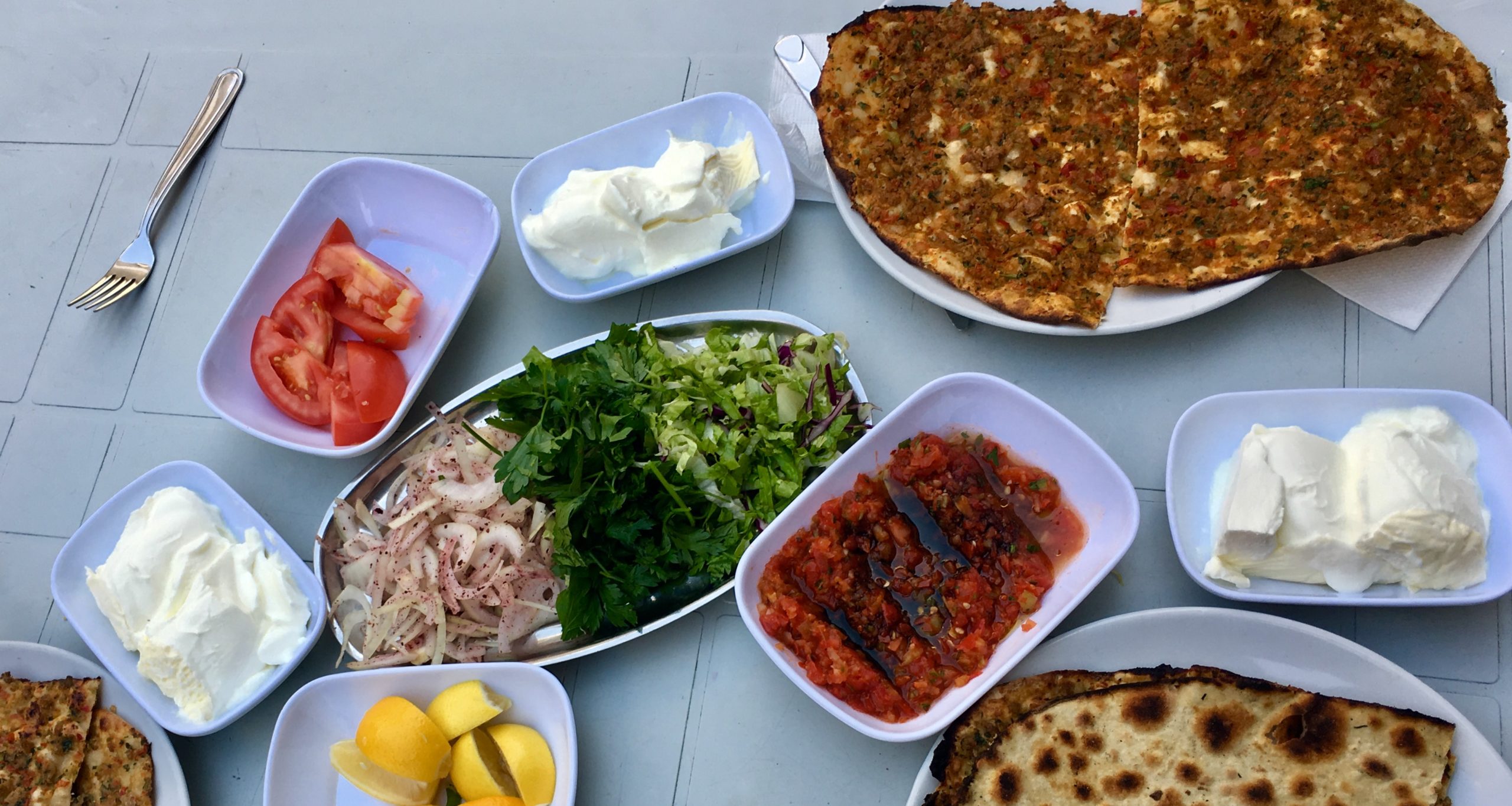Eating in a foreign country can sometimes be problematic, especially if you are not familiar with the eating habits and the culture. This was maybe more so when the world was not as much connected through social media as it is today. Still, the common reflex of a visitor in a foreign country is to be wary of food that can upset one’s stomach. And then, there is the common problem of getting caught up in tourist traps, which can happen anywhere in the world. My way of coping with this issue is to look for places that local people go to. The same applies to Istanbul. It is true that the Old City district of Istanbul is not necessarily the living area for Istanbulites. The majority of locals generally visit the area only once or twice a year. However, in every district in Istanbul, there are places frequented by tradesmen and the artisans for lunch. These restaurants should be the ones that you should be looking for in the Old City. They are the ones that almost always offer good quality local food at reasonable prices.
The question of citing the top or major cuisines of the world has always been and still is a very controversial one. Some experts include the Turkish cuisine in this list while others object. Whichever ones you deem worthy to list (French, Chinese, Italian or Turkish), you will notice that they are all related to notable empires in history. Exceptions to this contention might be the Russian and British cuisines. Famous cuisines that have their roots in vast historical empires are in a way, the melting pots of all the cuisines of the ethnic groups and nations within their historical territory. In fact, the imperial kitchen is the exact location where all the distinguished dishes and delicacies of the country ultimately reach and where they are refined to reach the sublime quality so to speak. It is also from there that the recipes of the altered dishes are redistributed to the whole country. So, it is no wonder that, there has always been and still is this never ending dispute over certain dishes or food; long discussions about whether this or that speciality is really Turkish or belongs to some other country that was under Ottoman reign. Covering the Balkans, parts of Eastern Europe, the Middle East, Crimea, South Caucasus and Georgia it is obvious that there were multi-way influences all over the region.
The usual reaction of an educated Istanbulite would be one of tolerance when such discussions flare up. Being fully aware of historical facts, they would not mind such claims. However, food that has been traditionally brought from Central Asia by Turks such as yoghurt, which even foreign linguists derive etymologically to be Turkish, ayran (an extremely popular drink in Turkey made by diluting yoghurt with water), all types of dried meat such as pastırma and sucuk, Turkish Delight and Turkish Coffee are within the boundaries of the red line.
Kebab is probably the most popular specialty of Turkish cuisine all over the world. You can encounter Kebab houses in the most unexpected places of the globe. Now, kebab is also claimed by several nations. However, kebab is not limited to the most renowned type; namely the döner kebab (döner in Turkish means rotating, denoting the mode of cooking the meat). There are many types of kebabs and different regions are famous for each kind.
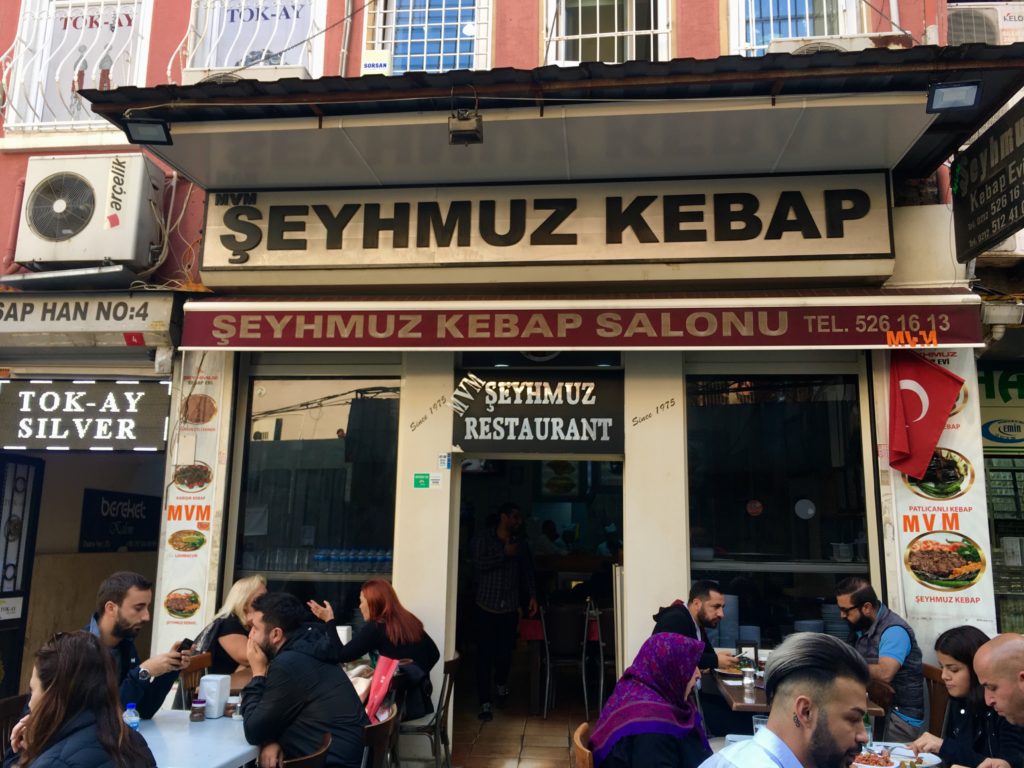
The Cıvıklı Şeyhmuz Kebap Restaurant, in Çemberlitaş is a place where you can eat special kebabs from the south-eastern region of Turkey. This is a very modest but good restaurant that closes at 6 p.m. Therefore, the best thing to do might be to go there for lunch while you are strolling around the area, on your way in or out of the Grand Bazaar through the Nuruosmaniye Doorway, near Çemberlitaş.
The restaurant might look a little bit shabby to you but from the photographs inside, we understand that even people pertaining to the Turkish upper class are among their clients. However, most of their loyal customers are people who work in the vicinity or people who come here knowing the reputation of the restaurant. You can either take a table inside or sit at one of those outside, if the weather permits.
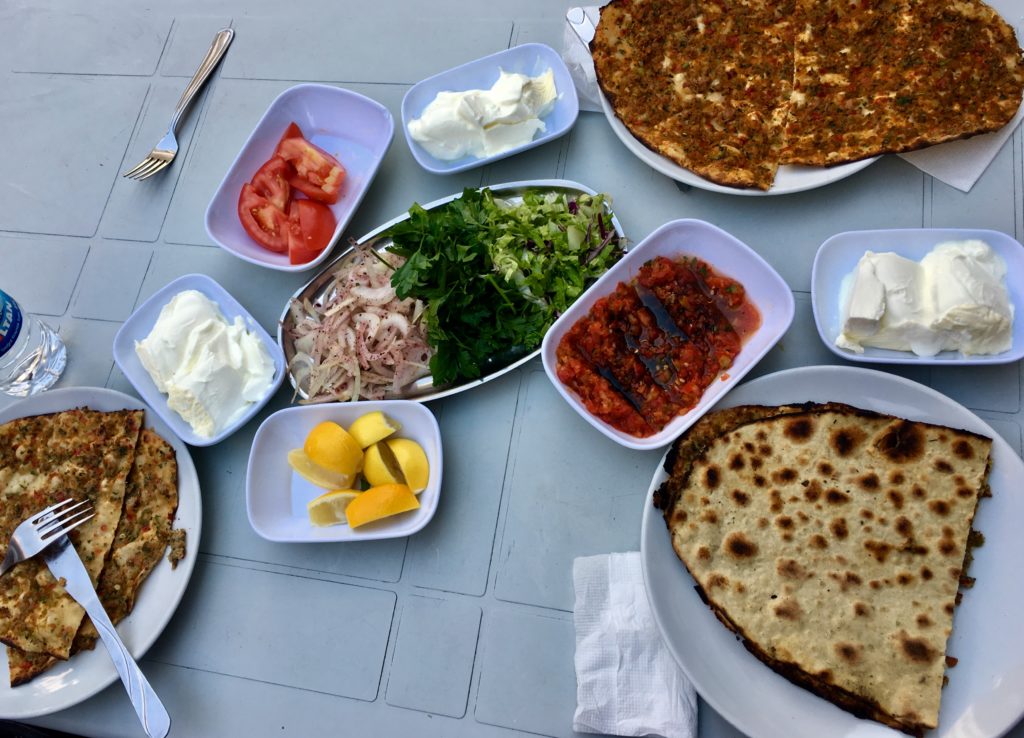
Lahmacun.
The ambiance might be lacking but the food that is served is well worth tasting. The place has a kebab by its own name, the Şeyhmuz Kebab which resembles a giant hamburger. Another kebab type is the Mardin (a town in south-east Turkey) kebab. However, our choice was lahmacun, a very thin pastry with minced meat, diced tomatoes and pepper on top. Some foreigners describe it as Turkish Pizza which I totally disagree. It has nothing to do with pizza. In this case, it was very tasty and delicious. In addition to the regular lahmacun, we also ordered Cıvıklı lahmacun which is made, not with minced meat but with chopped meat. Whichever dish you may choose, I would definitely recommend you to order yoghurt as a side dish. It will definitely give you an idea about why we Turks are never satisfied with any kind of yoghurt we eat abroad.
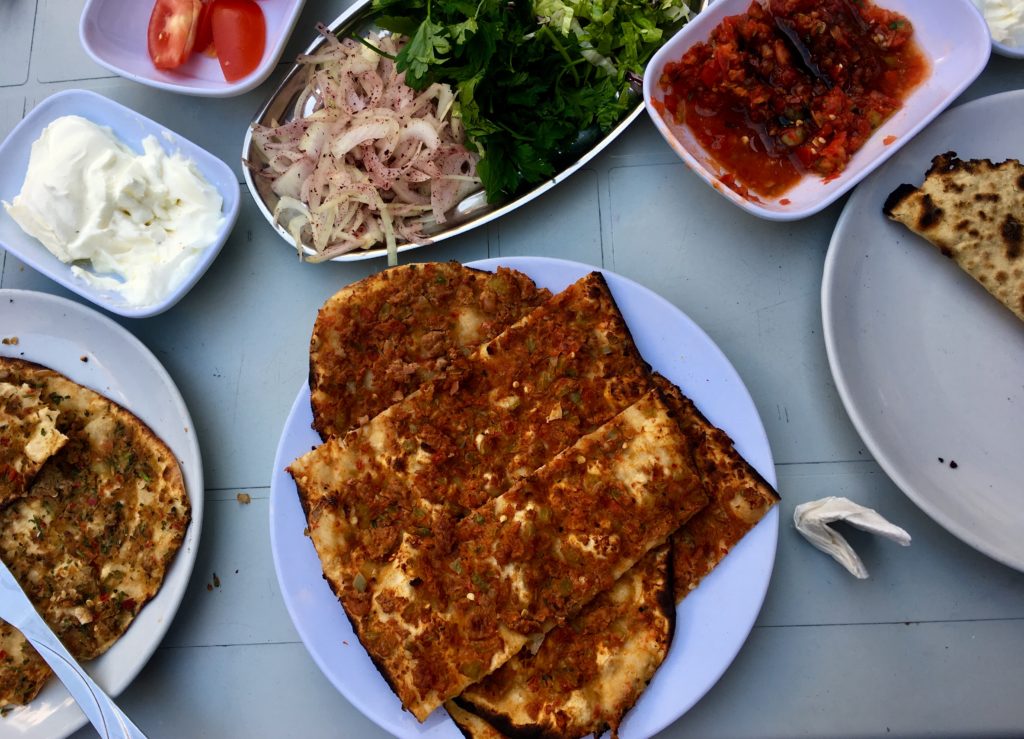
Speaking of different kinds of food being claimed by several nations at the same time, the strife can even exist among different regions of Turkey. Being also claimed by Kayseri (a town in Central Anatolia), “Cıvıklı” is such an example. You encounter hot debates in social media concerning its true town of origin. Does it really matter, as long as it is good? For example, one of the best lahmacuns I have ever tasted in my life was in Montreal and it was in a very modest Lebanese street restaurant.
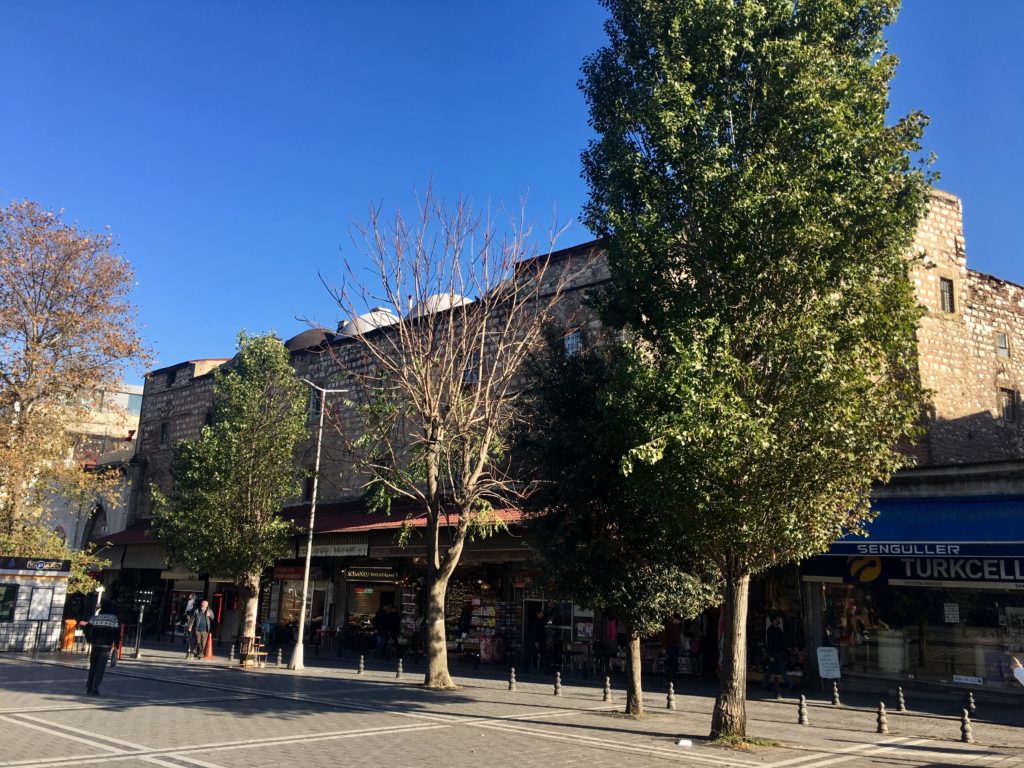
I became acquainted with the Cıvıklı Şeyhmuz Kebap Restaurant thanks to a dear friend and I would definitely like to try their other specialities when I am in the area again. To top the experience with a dessert, you can walk a short distance to Vezir Han (Vizier Inn) that has a gateway to the Column of Constantine (a.k.a. Burnt Column) square. This is a very old and somewhat dilapidated building. It was built in 1659-1660 by the Vizier of the time, Fazıl Ahmet Paşa, as a part of the Köprülü Mehmet Paşa (another famous Grand Vizier in Ottoman history) complex nearby. Originally, it had two porticoed courtyards. The place you should be heading to is inside Vezir Han. You will see the sign Gaziantep Seç Baklava at the entrance of the inn.
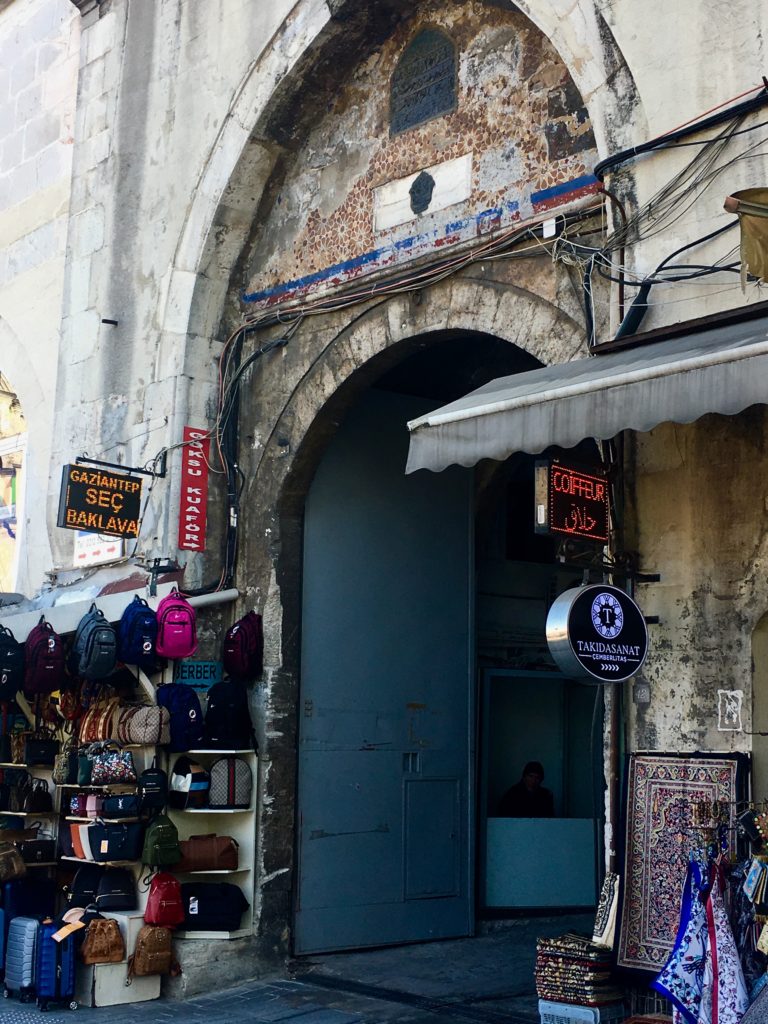
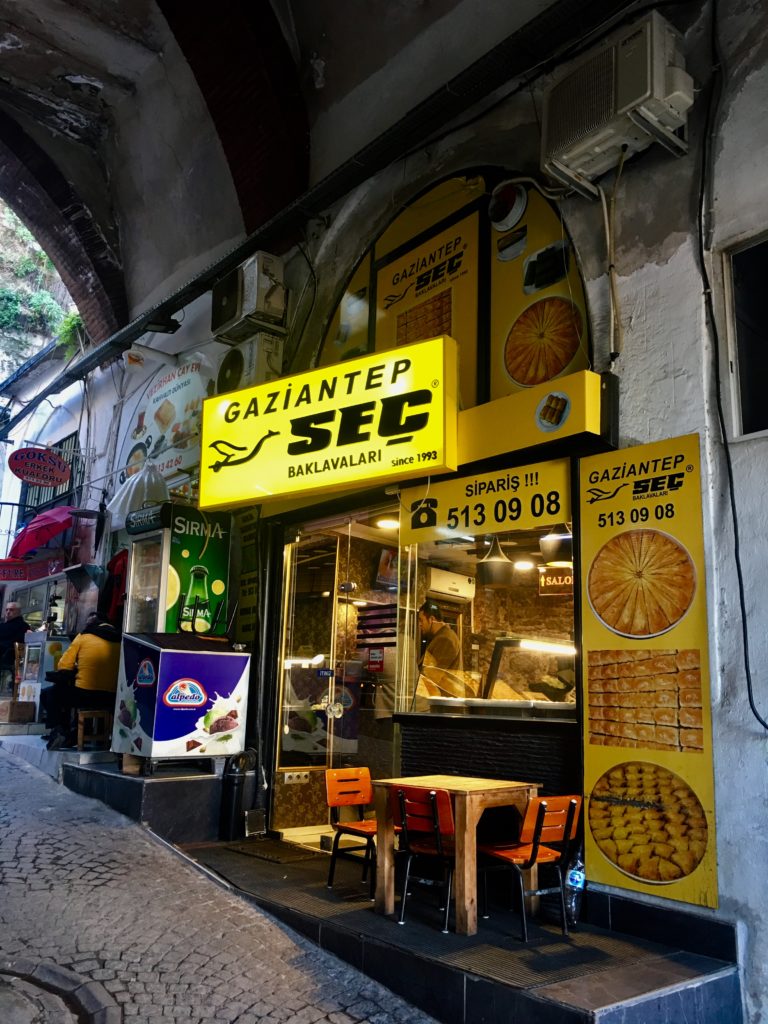
Once you are inside, you will see the small shop on the right hand side. The baklava that is sold here is brought daily from Gaziantep, a city in the south-east region of Turkey, that has a well deserved reputation for its baklava and several other pastry based desserts of the region. The layers are so thin, it is as if the baklava melts in your mouth. The pistachio inside the baklava, also from the same region, is abundantly used. The good part is that, you can even have a piece or two to try, if you do not want to buy a full box. They serve it immediately and you can eat it over the counter before heading for other historical places in the vicinity.
Addresses:
- Cıvıklı Şeyhmuz Kebap: Medrese Sokak, No 2, Çemberlitaş/Istanbul
- Gaziantep Seç Baklava: Vezirhan Cad. Vezirhan No:2 Çemberlitaş
